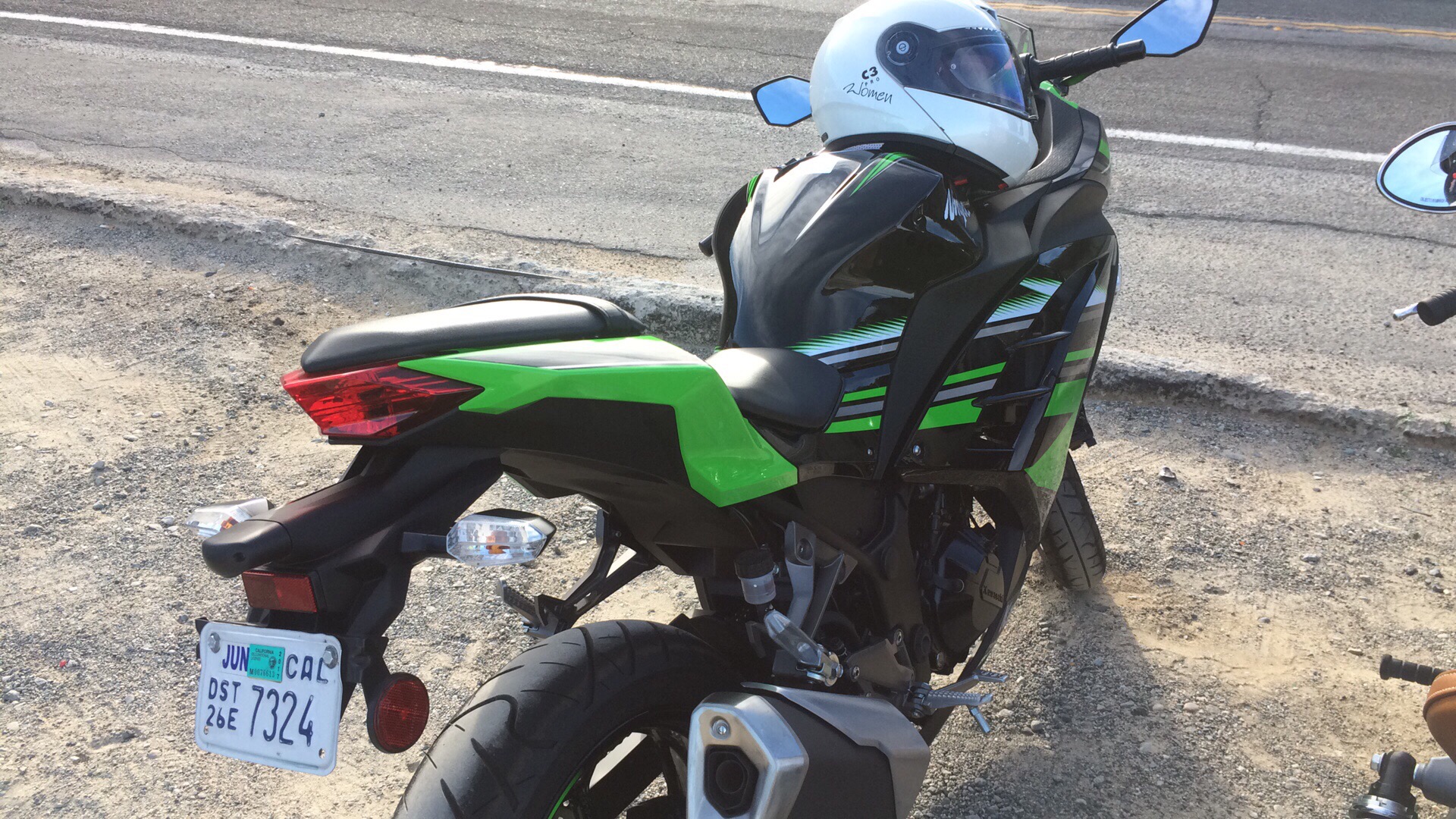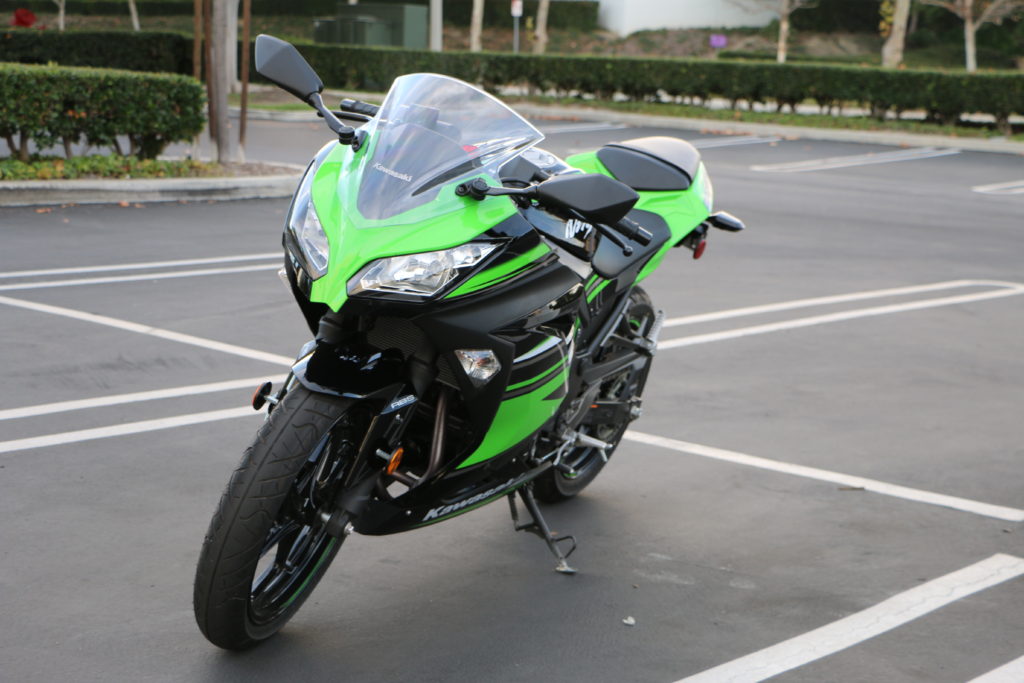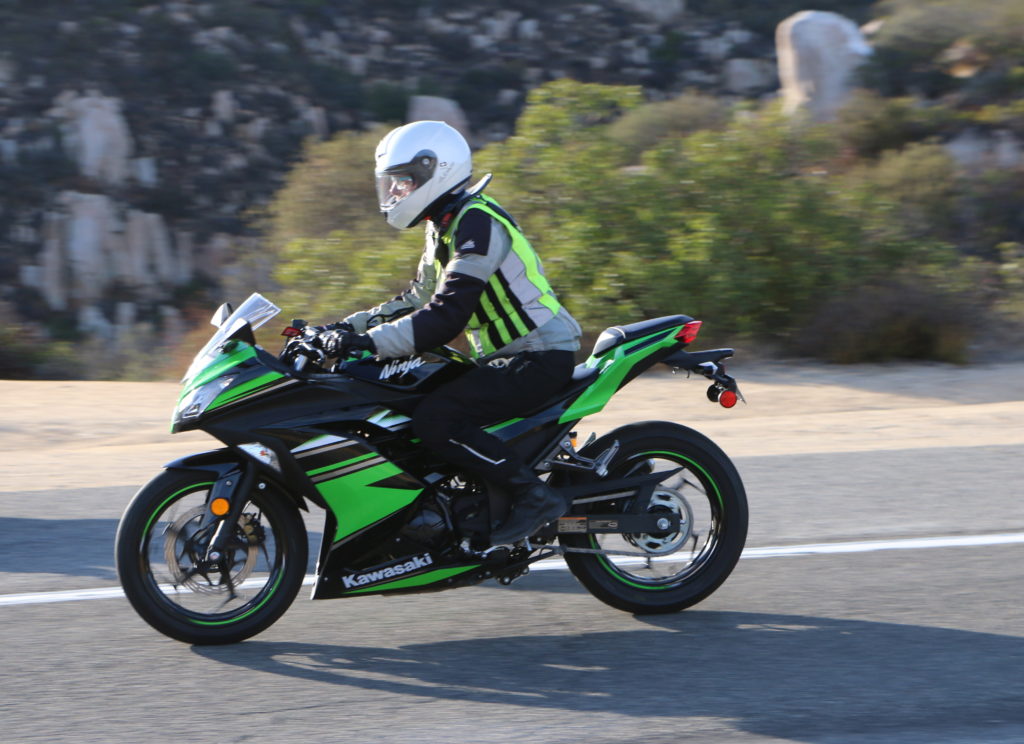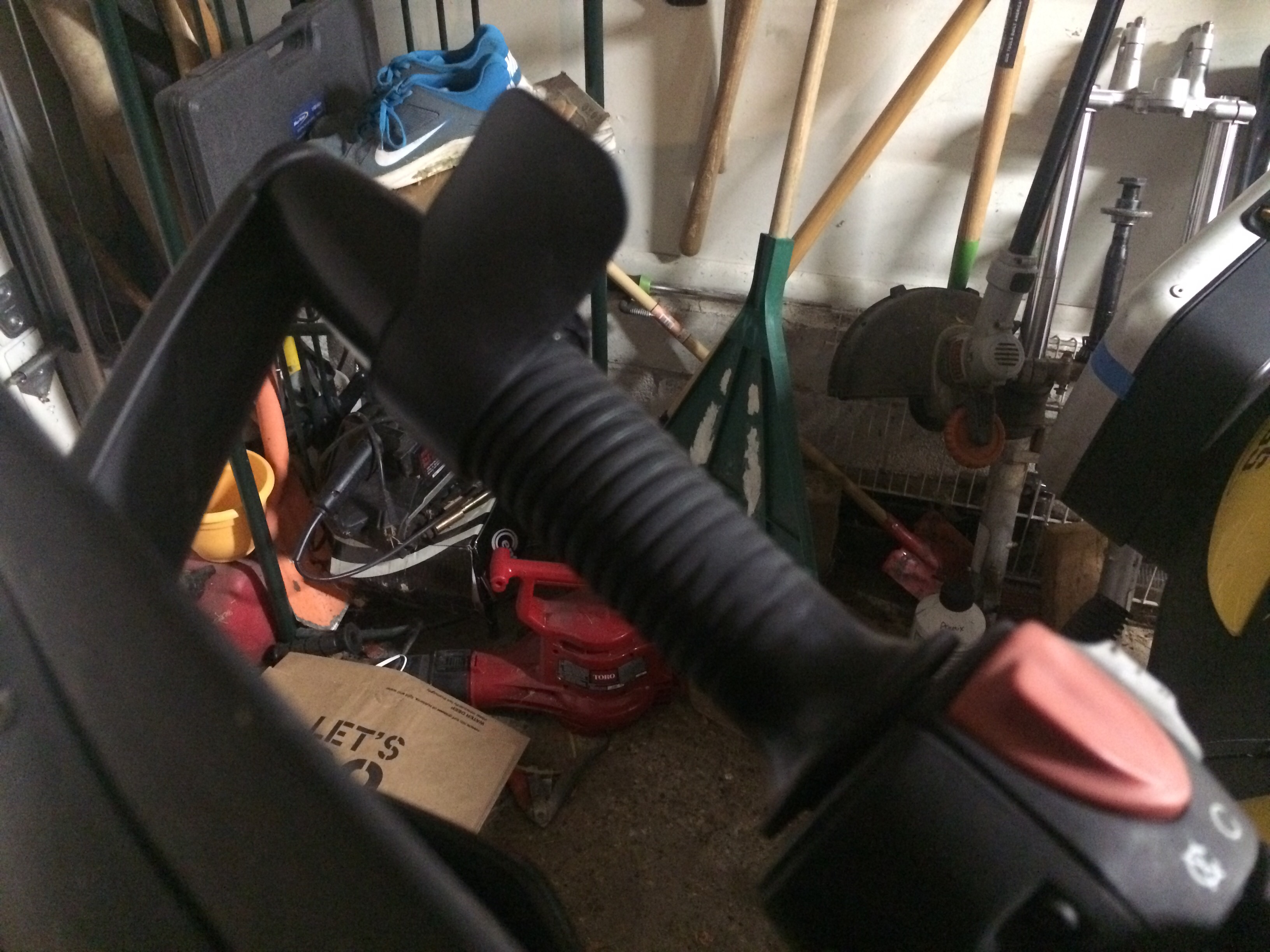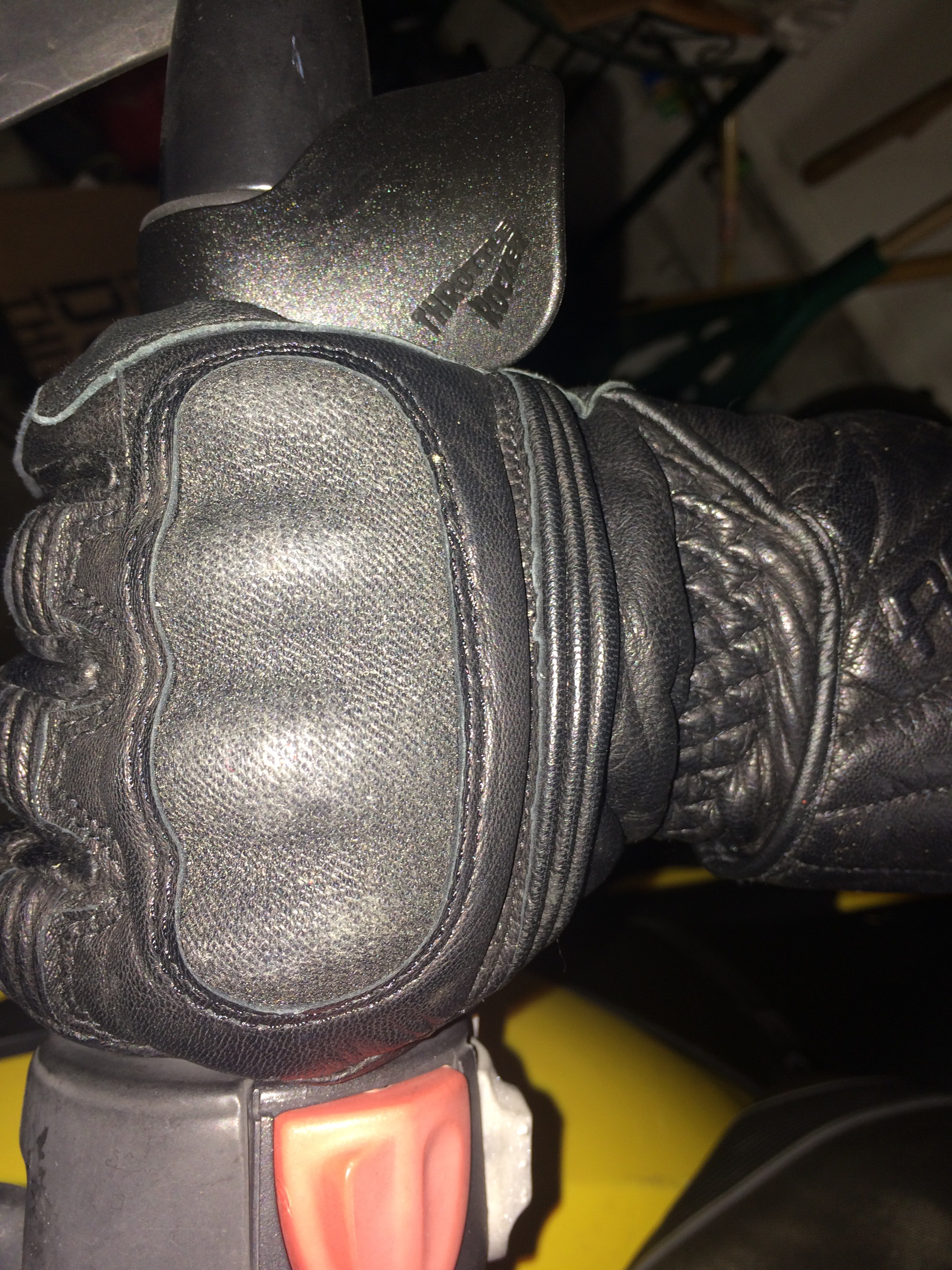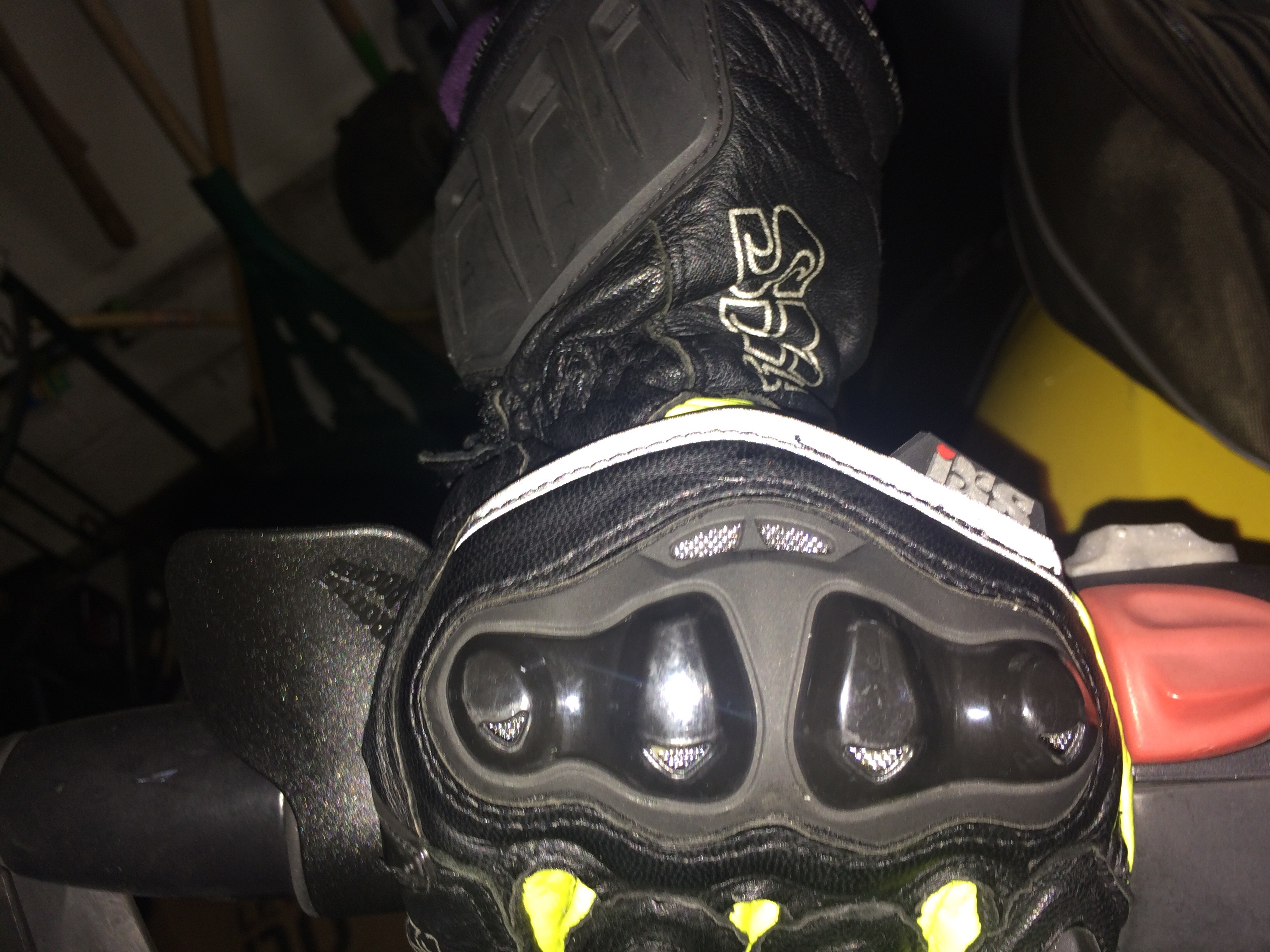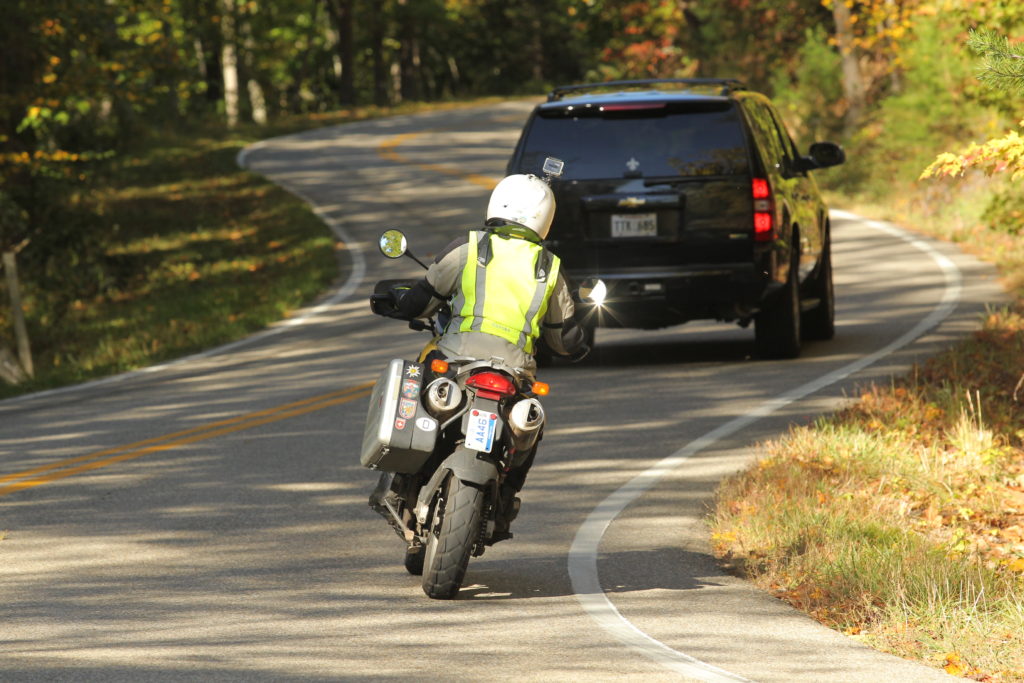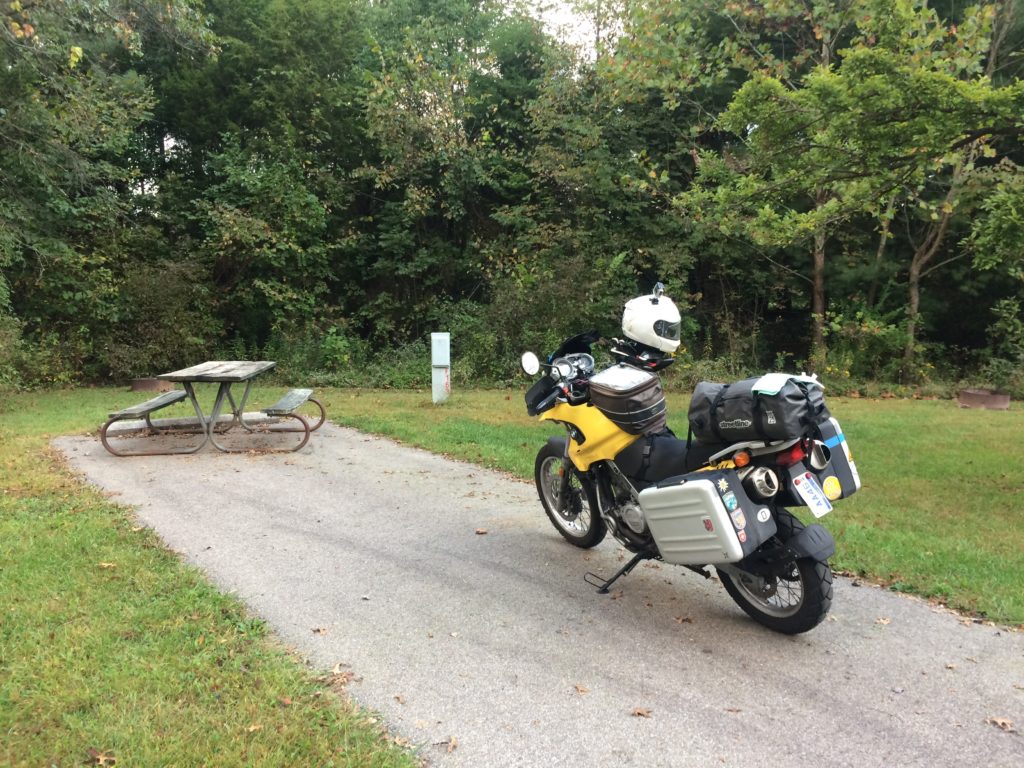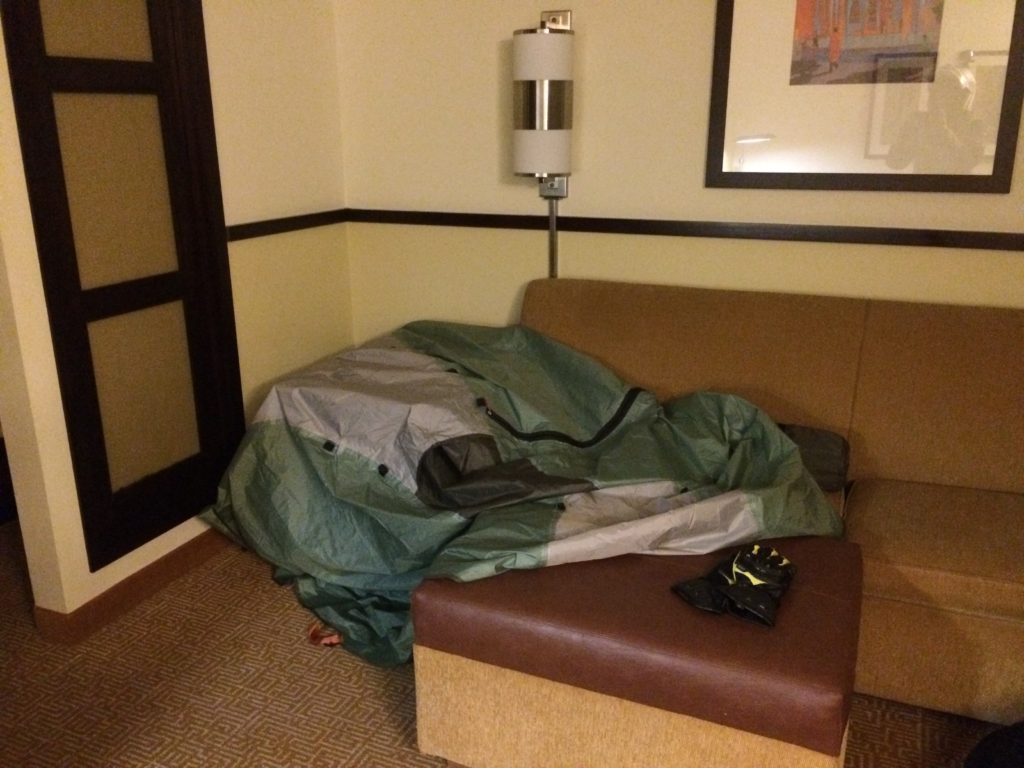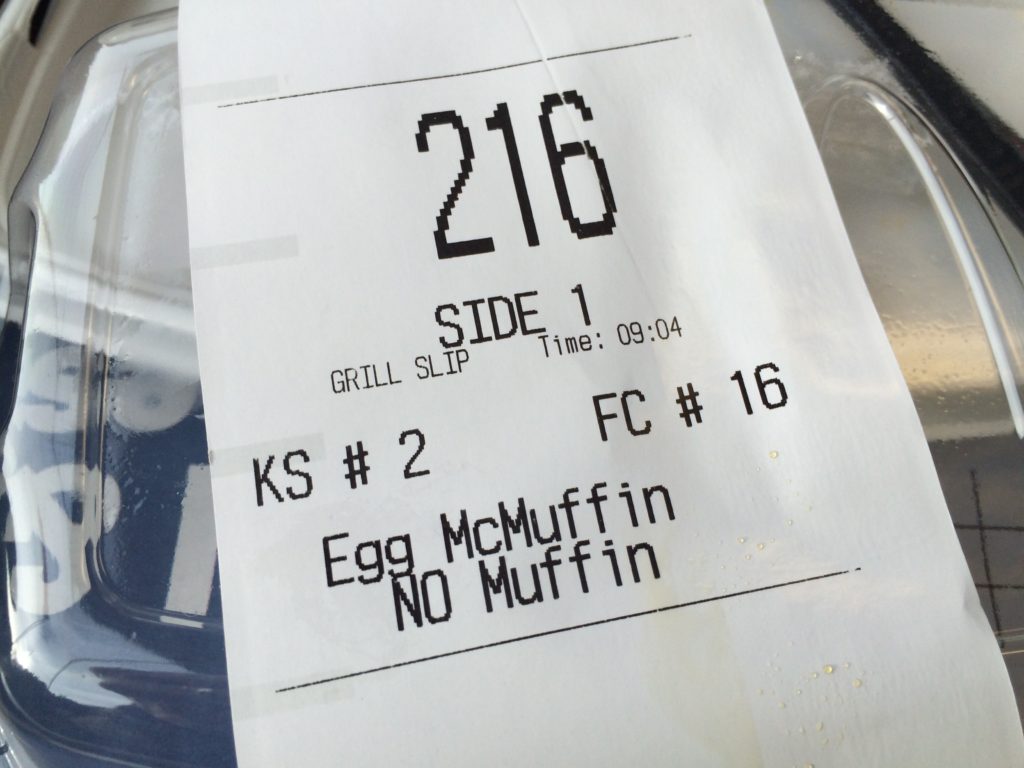I’m coming to LA! I said.
Let’s ride bikes! my friend Ronald said.
Bikes! my friend Andria said.
Race bikes in a wine cask! this guy Peter said.
Occasionally you get a work trip that goes somewhere really nice, like southern California. I have quite a few friends there, and like to take the opportunity to spend time together whenever possible. Friend Ronald and I make the effort to ride motorcycles together when we can, and my recent trip to Long Beach and Compton was no exception. We were privileged with loaners from Kawasaki and the Motorcycle Industry Council – I spent my day putting the new Ninja 300 through its paces and Ronald bounced around on a nicely kitted Versys. We ended up riding with a bunch of friends, new and old.
My trip started on arrival at SNA where I picked up a Ford Fiesta with the laziest torque converter in the world. Oh, you want to accelerate? Let me think about that. Absolutely killed the fun part of the car, even in sport mode. My gf Suzie had warned me about taking the 15 (the north route) and suggested the south route instead. I peeked at the map ahead of time – the south route was CA74, the Ortega Highway. While hardly an Alpine run, it’s a tight, twisty run over a 2665′ pass that takes you from the coast to the valley and on toward the desert. Roughly 20 miles of fun, even in the recalcitrant Fiesta.
I arrived in Wildomar and was met not just by Suzie, but friends Teri and Richard! A great surprise for me. We dined at a Mediterranean restaurant and shortly after, I flopped over, sound asleep in a nice, comfy bed. I needed to be out of the house at 0530 in the morning to head back over the Ortega to meet my riding group.
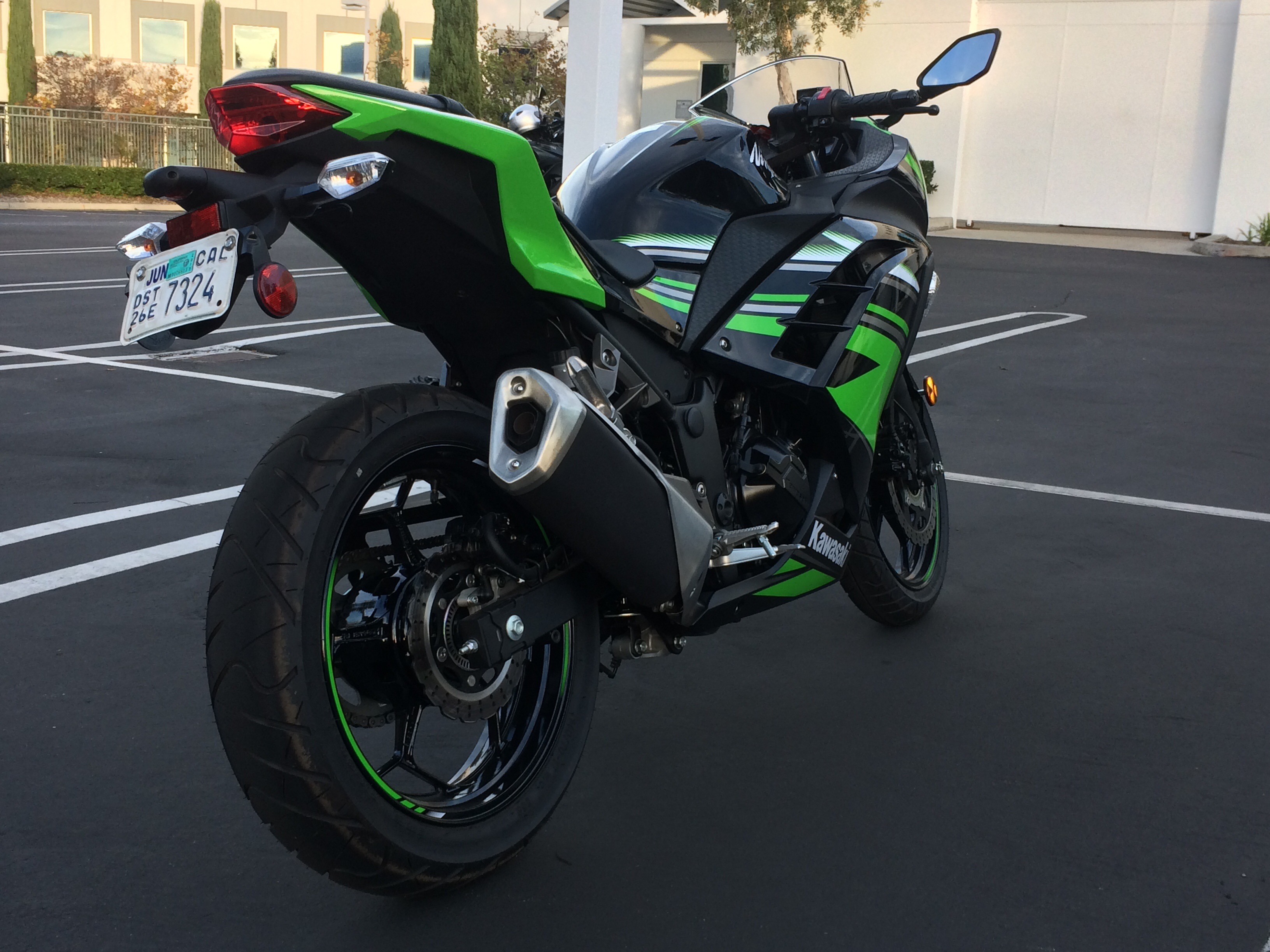
I was joined by friends Ronald and Andria at the Motorcycle Industry Council, home also to the Motorcycle Safety Foundation. Andria had arranged for the loan of two Kawasaki motos for Ronald and I – the delightful Ninja 300 for me, and a Versys 650 for him. Thankfully the Versys had big panniers, because we couldn’t get the seat off the Ninjette so I could mount my tank bag, and Andria’s beautiful Indian Scout had no storage, either. We teased Ronald a bit about carrying two women’s purses. From the MIC, we headed off to Schubert North America to pick up Peter Meade and his big GS. Peter had arranged a day loan of Schubert’s C3Pro Women for me to test out. I’m desperately in need of a new helmet, so…… He also had arranged for us to visit MotoDoffo at the Doffo family vineyard near Temecula.

We headed out the way I’d come in – over the Ortega. Every road looks different on a bike. No matter that I’d come over it in a car, all I’d learned was the basic layout. On the bike, the twisties took on new looks and lines. The little Ninja was flick-flick the whole time, limited more by its rider than its mechanicals. We stopped at the top of the road at the Overlook, a classic bikertreffpunkt like I used to go to in Germany. Tons of gorgeous sportbikes everywhere, and a great view of Lake Elsinore.
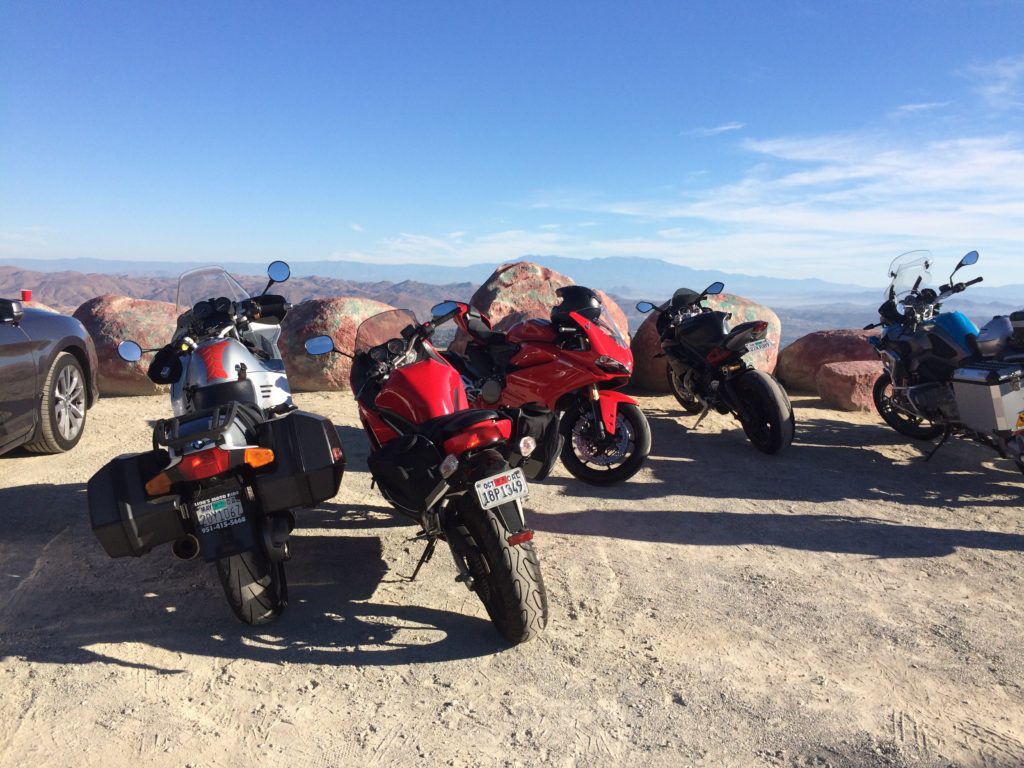

We headed down into the valley to Temecula for a late breakfast at the Swing Inn. It was filling and yummy. We discussed the next phase of the ride – we would visit MotoDoffo, a collection of older racing bikes displayed at the Doffo family vineyard. We would also meet Suzie, Teri, and Richard. It turned out that Suzie knew the Doffo family through her experience in racing and wine, and if Marcelo wasn’t home, she’d rope son Damian into taking us around. We rode out of Temecula into the sun and wine country.


Arriving at Doffo, we parked and began wandering around while Peter hunted down the family. Suzie&Co arrived and introductions were made. From there, it was BIKES!
The Doffo family have been racing motorcycles and participating in the racing community for multiple generations. Once the winery was up and running, they decided to install a homage to 1970s motorcycles and mototechnology in the form of a museum. Featuring everything from your basic SuperCub to a big cube KZ, it’s a love letter to two wheels with autographed pictures from Ducati. My favorite bit was a light-up sitting Bibendum figure, as I have now seen two of them and am convinced that they are real. I love Bib and all things Bib.

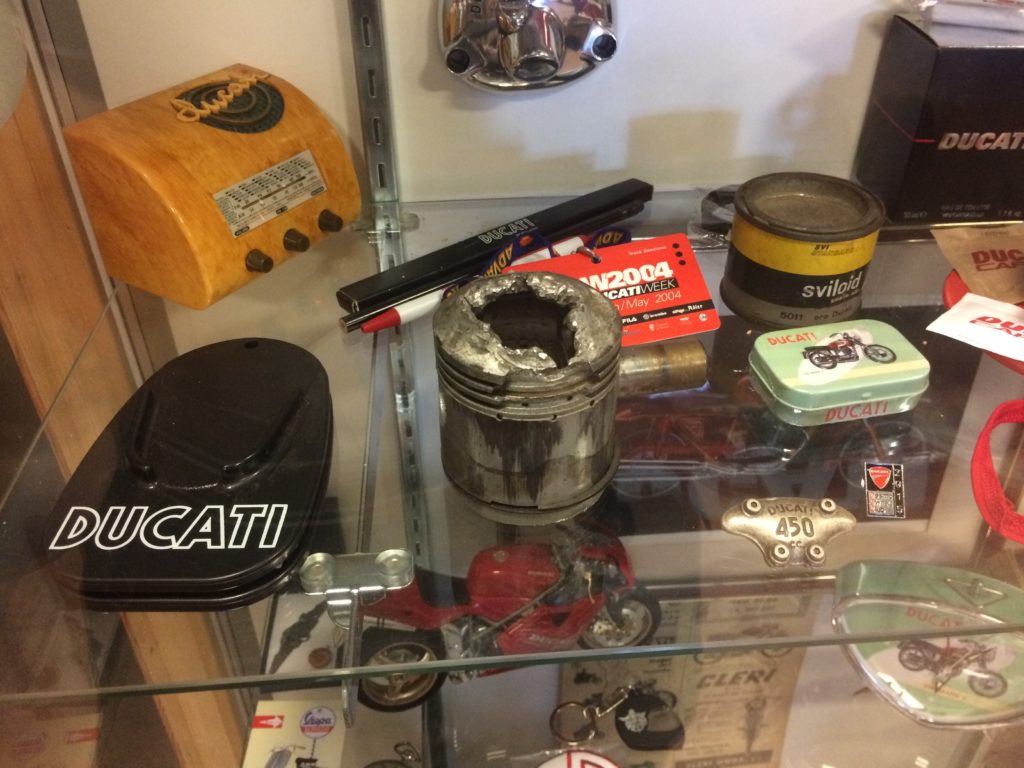
Damian Doffo guided us around the display and pointed out some of the more significant bikes, including a particularly rare early Ducati owned by his father. I gawked at the parts in a display case. We learned about the Doffo family’s experiences racing both bikes and cars, and I chatted up Damian about our shared experience in the 24hrs of LeMons. Imagine that, two LeMons racers in a room full of bikes. We tried valiantly to explain it all to the others, but I guess you only get the LeMons if you get it.
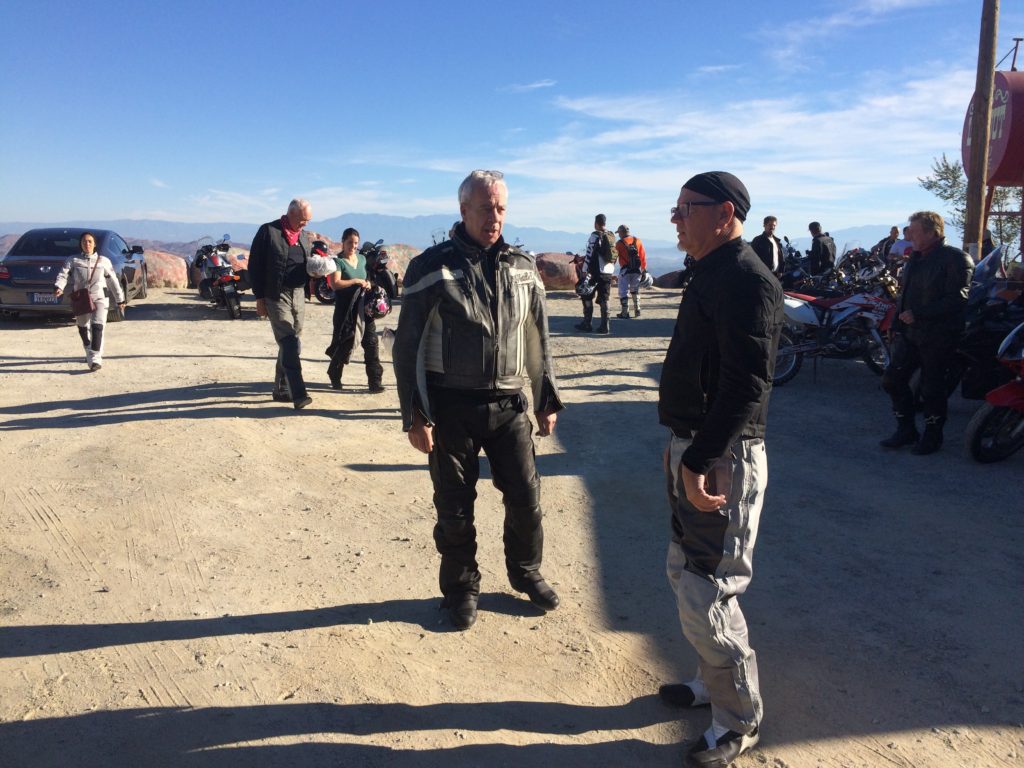
We visited the back shop, where the restorations take place in between pressings. More Ducati, including a Ducati rototiller (!), which is right up there with MI friend Ben’s Lamborghini orchard tractors. A lap around the dirt loop outside of the ship (in a golf cart) had us holding on for dear life.
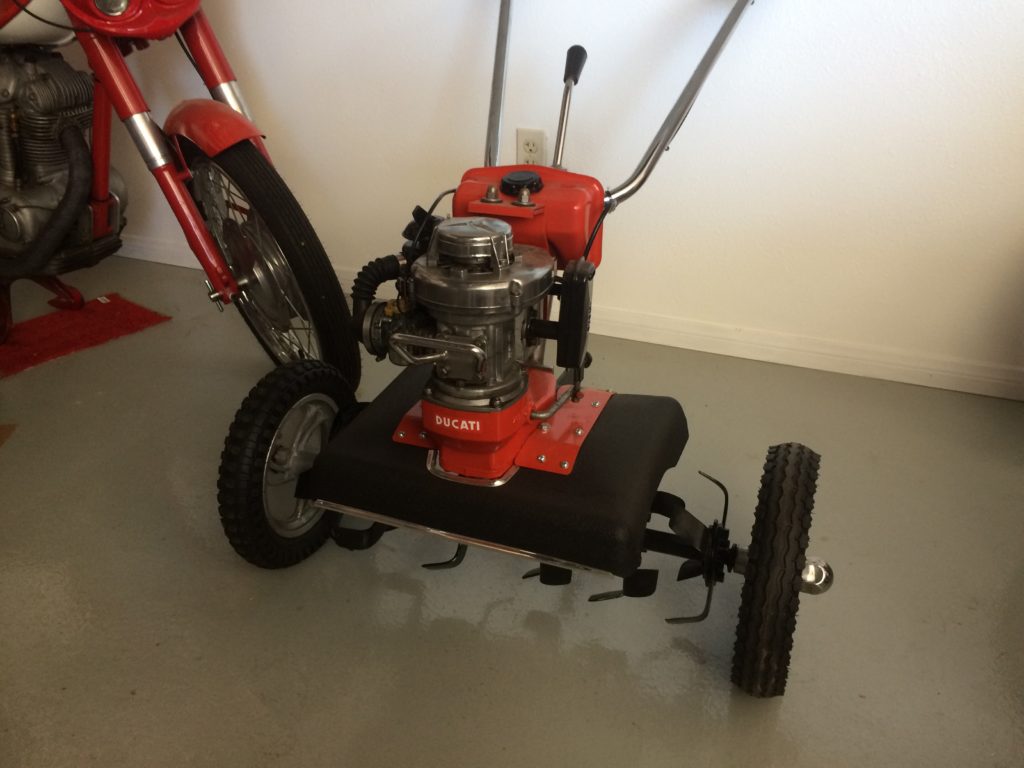
Richard led us back to the Ortega on a beautiful back road around the “back” side of town, climbing up and over a mountain range that reminded me more of the Angeles Crest than the Ortega. It was over too quickly – we found ourselves back at the Lookout at the end of the day. From there, we decamped to the MIC office to hand over the keys and retrieve our purses, and wound ourselves down from the joy of a great day of riding.

My day ended with a nice, quiet tapas dinner with Ronald in Long Beach. It was a perfect start to my week of training in California, something I apparently need to do a lot more of!

